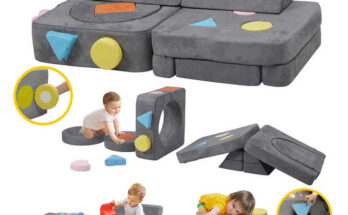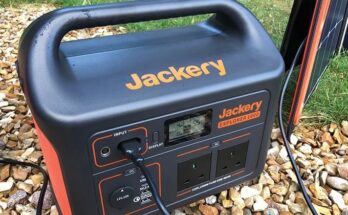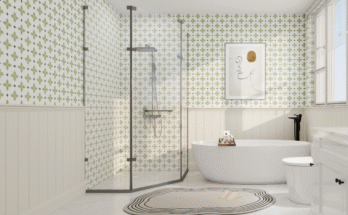Conservatories are wonderful additions to any home, providing a light-filled space that brings the outdoors inside. However, like any part of your home, conservatories can develop issues over time. Regular maintenance and timely repairs can extend the life of your conservatory and ensure it remains a comfortable and attractive space. In this comprehensive guide, we’ll explore some common conservatory repairs and offer practical DIY solutions for homeowners. Whether you’re dealing with leaks, condensation, or structural issues, we’ve got you covered.
Conservatories are cherished as versatile spaces, perfect for relaxation, entertaining guests, or even gardening. However, exposure to the elements year-round means they require regular upkeep. This guide aims to empower homeowners with the knowledge and confidence to handle common conservatory repairs, ensuring their conservatories remain in tip-top shape.
Common Issues with Conservatories
Leaks
One of the most frequently reported problems in conservatories is leaking. Water ingress can occur due to a variety of reasons, including aged seals, poor installation, or damage to the conservatory roof or windows. Left unchecked, leaks can lead to more severe structural damage and mould growth.
Condensation
Condensation is another common issue, especially in colder months. It occurs when warm, moist air inside the conservatory meets cold surfaces, such as windows or walls. This can lead to damp patches, mould, and damage to fixtures and fittings.
Drafts
Drafts can make your conservatory feel cold and uncomfortable. They are often caused by gaps in the structure, faulty seals around windows and doors, or poor insulation.
Roof Damage
The roof is a critical part of your conservatory, but it is also the most exposed to the elements. Over time, roofs can suffer from cracked panels, loose fittings, or moss growth, leading to leaks and other issues.
Broken or Foggy Glass Panels
Broken or foggy glass panels not only detract from the appearance of your conservatory but can also affect its insulation properties. Fogging usually indicates a failure in double glazing, resulting in condensation between the glass panes.
DIY Repair Solutions
Fixing Leaks
Step 1: Identify the Source
First, pinpoint where the leak is coming from. Check seals, roof joints, and guttering for obvious signs of damage or wear.
Step 2: Reseal
Use a high-quality silicone sealant to repair small cracks or gaps. Ensure the area is clean and dry before applying the sealant.
Step 3: Replace Damaged Parts
If the leak is due to a damaged roof panel or flashing, these will need to be replaced. You can find replacement parts at most home improvement stores.
Reducing Condensation
Step 1: Improve Ventilation
Ensure your conservatory has adequate ventilation. Open windows and doors regularly to allow air to circulate and reduce humidity levels.
Step 2: Use a Dehumidifier
A dehumidifier can help control moisture levels, especially during colder months when ventilation is less practical.
Step 3: Insulate
Consider adding insulation to your conservatory to keep surfaces warmer and reduce the likelihood of condensation.
Sealing Drafts
Step 1: Identify Draft Sources
Check around windows, doors, and vents for gaps where draughts can enter.
Step 2: Apply Weatherstripping
Use weatherstripping tape to seal gaps around windows and doors. This is an easy and cost-effective way to improve insulation.
Step 3: Insulate Gaps
For larger gaps, use expanding foam insulation. Be careful not to overfill, as this can cause damage.
Repairing Roof Damage
Step 1: Inspect the Roof
Look for cracked panels, loose fittings, or moss growth.
Step 2: Clean the Roof
Remove any debris or moss that could be causing damage. Use a soft brush and soapy water to clean the panels.
Step 3: Replace Damaged Panels
If panels are cracked or damaged, replace them with new ones. Ensure they are properly fitted and sealed to prevent leaks.
Replacing Glass Panels
Step 1: Measure the Panel
Carefully measure the dimensions of the broken or foggy glass panel.
Step 2: Remove the Old Panel
Remove any beading holding the glass in place and carefully take out the old panel.
Step 3: Fit the New Panel
Place the new glass panel in position and secure it with beading. Ensure the seals are tight to prevent drafts and leaks.
When to Call a Professional
While many conservatory repairs can be handled by a determined DIY enthusiast, some situations warrant professional intervention:
- Extensive Roof Damage: If the roof structure is compromised or multiple panels need replacing, it’s best to call in the experts.
- Major Leaks: Persistent leaks that you can’t fix with sealant may indicate a more serious problem.
- Structural Issues: If you notice any signs of subsidence or structural damage, seek professional help immediately.
- Electrical Problems: Always hire a qualified electrician for any electrical issues in your conservatory.
Maintaining your conservatory doesn’t have to be a daunting task. By understanding common issues and knowing how to address them, you can keep your conservatory in excellent condition for years to come. While some repairs are simple enough to handle on your own, don’t hesitate to call in professionals for more complex problems. With regular maintenance and timely repairs, your conservatory will continue to be a bright and welcoming space in your home.



